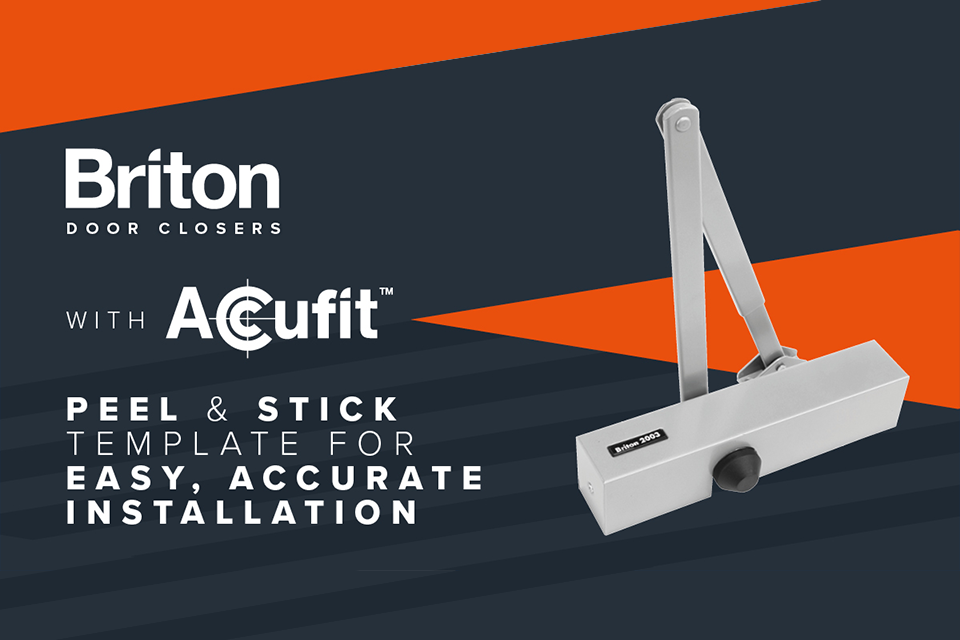Setting The Standard With Allegion

There are many standards, certifications and regulations within our industry, of which some are well known, others are thought be to be known and some are not known or understood at all.
With the help of our suppliers, we’re striving to increase the awareness and education of standards to our customer base.
To help us do this, some of our Commercial Team recently visited the head office of Allegion UK to learn more about their vast market leading range of products and the standards they adhere to, focusing on Door Closers and Exit Hardware from the Briton range of products.
Allegion is one of the largest and leading global access and security brands in the world, with a vast product portfolio that includes many well-known brand names such as Briton, Legge, CISA, Schlage, Bricard, Brio and more; in fact, there are over 30 brands sold globally within the Allegion group.
Aldridge is proud to be an official distributor for Allegion products in the UK & Ireland, with a vast stock holding of Allegion brands available for same day despatch until 7pm every working day.
Door Closers
What Is A Door Closer And Why Do We Need Them?
A door closer is a mechanical device that controls the speed and action of a door opening and closing.
In doing this they also provide increased security, privacy and convenience. Furthermore, a door closer can help to reduce the consumption of energy, the spread of germs and most importantly can help to slow and prevent the spread of fire.
What Standards Are In Place For Door Closers In The UK?
BS EN 1154 is the designated UK Standard and the harmonised European Standard covering “Controlled Door Closing Devices”. The standard requires that all door closers fitted to fire doors be UKCA and/or CE marked and no less than power size EN 3, adjustable closers must be able to achieve this as a minimum requirement.
View Briton BS EN 1154 compliant closers
BS EN 1155 specifies the requirements for devices which provide an electrically controlled hold-open or swing-free function on doors used for fire/smoke compartmentation. This includes separate electrically controlled hold-open devices which may be used in conjunction with a standard mechanical door closer and hold-open magnets. To comply, the devices must be capable of both manual and electric release. Compliance with the British-European standards ensures that door closers meet the recognised standards for functionality, safety and durability.
View Briton BS EN 1155 compliant closers
How Easy Are Door Closers To Fit Correctly?
Briton is one of the first manufacturers to include self-adhesive installation templates with its products. The templates are designed to facilitate the correct installation of Briton door closers, and for 25 years they have remained a proven support tool for installers.
Briton, rather appropriately, call this peel and stick template ‘Accufit’, to find out more about Briton Accufit templates and what it means to the customer we asked Allegion UK’s National Account Manager, Kirk Smith:
“The cost associated with inaccurate fixing of a door closer can be of significant proportions, particularly when it has a ‘knock on’ effect on the other hardware on the door, the door itself and the surrounding structure. The Accufit system was designed to address this deficiency and provides real term benefits far beyond the simple savings in installation time. The life of the product is greatly enhanced by being fitted accurately and has a beneficial effect on the operation of the whole door".
“With changes in fire legislation, and a renewed focus on competency, ensuring accurate installation is now more significant than ever and we are confident that the Accufit system will assist in delivering accurate installation and improved fire safety standards for another 25 years to come”.
To see how easy and accurate it really was to fit a closer using the ‘Accufit’ template some of our team gave it ago and managed to fit a Briton 2003 door closer in minutes.

You can view the full Briton range of door closers on our website now for nationwide next working day delivery!
Exit Hardware
What Is Panic & Emergency Hardware And Why Do We Need It?
In 1903 fire broke out in the Iroquois Theatre, Chicago. All the doors had been locked to keep gate crashers out and 594 men, women and children lost their lives, unable to find a way out of the burning building. Many bodies were discovered lying against the perimeter doors, which all opened inwards.
An Indianapolis hardware salesman Carl Prinzler had planned to be at the theatre that day but for whatever reason he was unable to attend, as a result of this he lived.
Obsessed with the needless loss of lives, Prinzler teamed up with neighbour Henry DuPont an architectural engineer and together they invented the exit device.
In 1908, the first exit device was marketed by Vonnegut Hardware Company under the name Von Duprin, another of the Allegion’s brands; exit hardware devices have been essential to all commercial buildings ever since.
What Standards Are In Place For Panic & Exit Hardware In The UK?
It is a legal requirement for all exit devices to comply with the latest revisions of BS EN 1125 and BS EN 179 and to have UKCA and CE marking.
BS EN 1125 is the designated standard in the UK for Panic Exit Hardware.
The term panic is defined by the application in which it is fitted and if the occupants have prior knowledge of the building.
A panic application is where the exit door is used by members of the public. Panic exit hardware must provide safe and effective escape through the doorway with minimum effort and without prior knowledge of operation, examples of this are shops, schools, hospitals, restaurants, cinema’s etc.
Devices used in panic applications are required to be fitted to outward opening doors and to cover 60% of the door width to make them easy to find and operate in an emergency.
BS EN 179 is the designated standard in the UK for Emergency Exit Hardware.
An emergency application is where the exit door is in a low occupancy environment and will only be used by trained personnel, such as in a place of work never accessed by the public or people unfamiliar with the escape drill, examples of this are offices, private residences, store rooms, boiler rooms etc.
In most applications where panic or emergency exit hardware is fitted an outside access device may also be installed, this allows access via key or digital lock from the outside to gain access to the building through the exit door.
Once again, our team put the ease of fitting to the test, installing a Briton Panic Bar on a functioning sample door.

The full extensive range of Briton Panic & Emergency Exit Hardware is available via our website for sane working day despatch on all orders placed before 7pm!
With the help of our suppliers, we’re striving to increase the awareness and education of standards to our customer base.





















